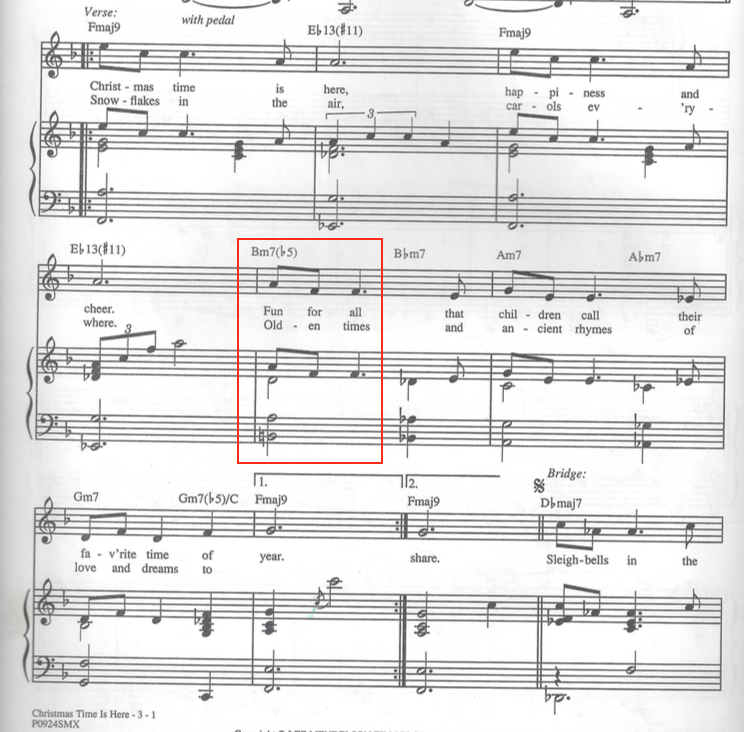Hi everyone.
I'm working on an analysis of Christmas Time Is Here, which is in F major.
I'm trying to determine the best way to analyze the Bm7(♭5) chord circled in the image. I have 3 explanations right now:
- It is a viiø/V resolving (after moving through the B♭m7 passing chord) to iii7, which is the relative minor substitute for V.
- It is a ♯ivø7 chord borrowed from F-Lydian.
- It is a iiø7/iii or a ivadd6/iii, tonicizing A minor.
Do any of these seem to be the best way to go about analyzing the chord? Is there a better way of analyzing it that I haven't included? I'd love to read some thoughts on how to explain the function of this chord in the music. Thanks in advance, and happy holidays!

